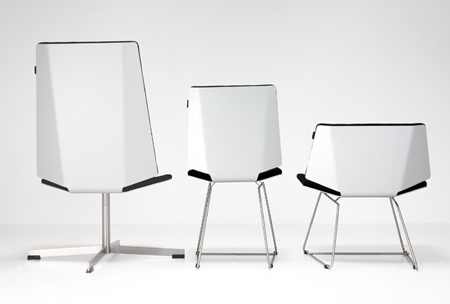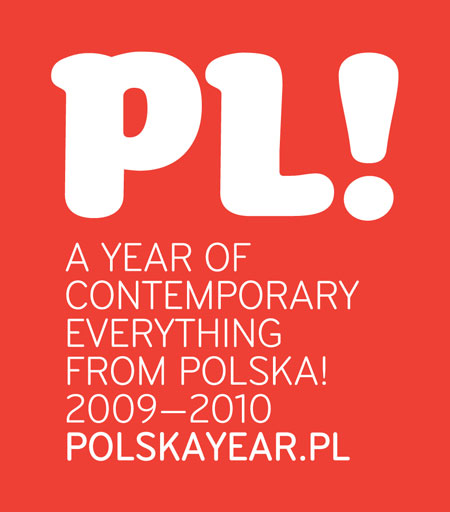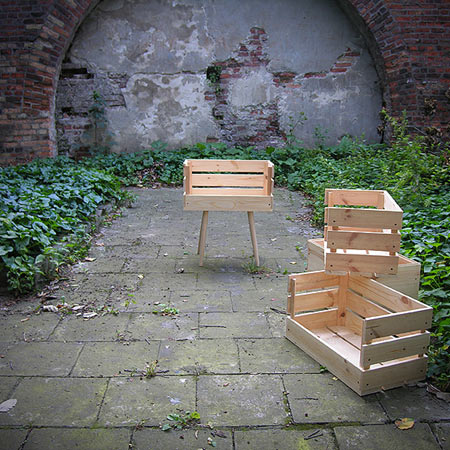
Studio profile: Kompott
Polish Design Season: here's an overview of work by one of Dezeen's favourite Polish design studios, Kompott.

Above: Kompott boxes. Boxes Working on a borderline of the Old and the New, we were tempted to reinterpret the most elementary object for storing - a wooden box. Basing on its construction - using the slots in between the planks - we have developed a simple storage system based on the traditional way of connecting wood.
Established in April this year, the studio consists of Maja Ganszyniec, Krystian Kowalski and Pawel Jasiewicz.
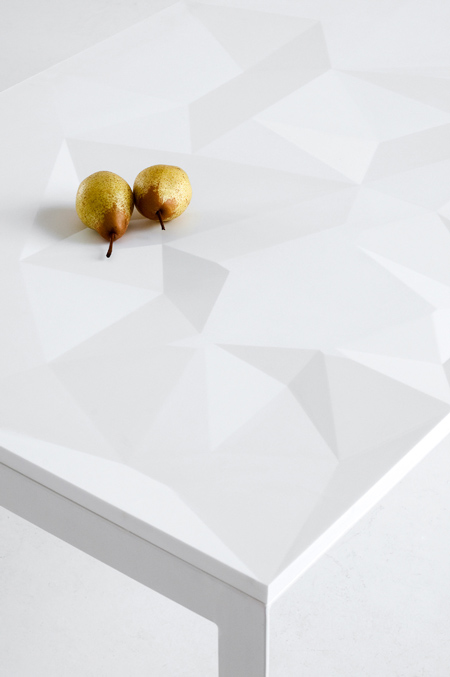
Above and below: Kompott taka table. Corian® Du Pont is a material commonly used for the kitchen and bathroom countertops. Developing a new product we decided not to search for the yet another alternative application. Instead we propose a new form and function for the flat surface of the table top. In the project we used the qualities of Corian® as a solid, nonporous and certified for food contact material.
Here are a selection of their projects, with captions provided by Kompott.

Follow all our stories about Polish design this month in our special category. More details about Polish Design Season on Dezeen here.
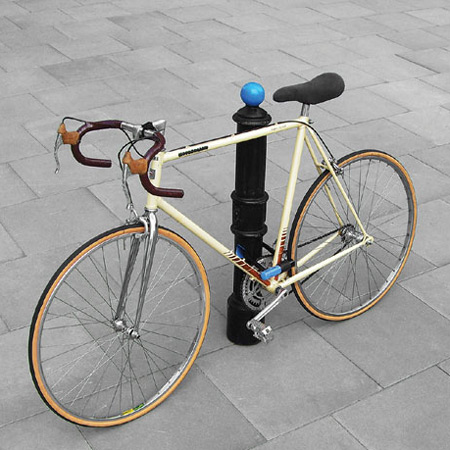
Above and below: Kompott parkower. Parkower is a project for the city of Warsaw. The idea is to make the city space more accessible for cyclists. By the simple intervention in the existing elements of urban landscape – drilling holes in the street poles - the number of bicycle racks in the public spaces significantly increased.
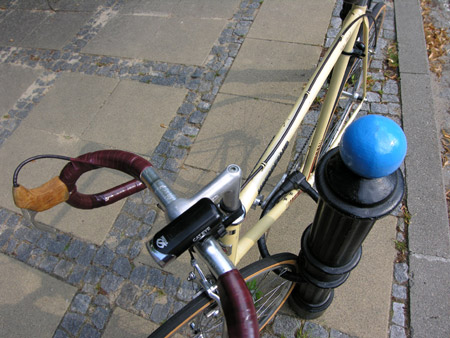
Here's some more information from the designers themselves:
--
The Kompott Studio was established in April 2009 somewhere between London, Warsaw and Madrid.
The team members are:
Maja Ganszyniec, Krystian Kowalski, (Royal College of Art Design Products graduates), Pawel Jasiewicz (MA in Furniture design at the Chilterens University College Buckingham) and Marcin Krygier (free-lance photographer living and working in Madrid).
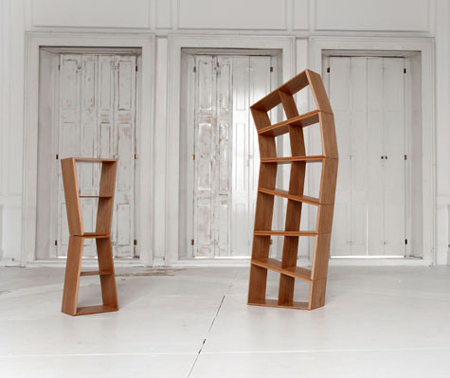
Above and below: 6 degree is aflexible shelving system based on a module, that multiplied allows creating many diverse configurations
They work together sharing experiences gained at such design offices as Bellini and Atelier Mendini in Milan or El Ultimo Grito in London.

Why
Kompott believes in Design Thinking. In their projects they look for smart solutions based on the observations of human behavior. The Studio conducts a thorough research on people’s interactions with objects and is particularly interested in creating new typologies.
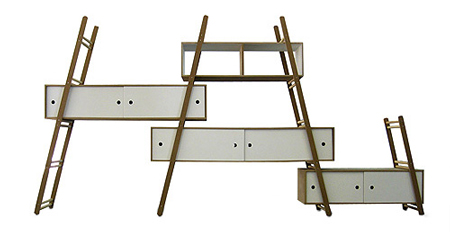
Above and below: Ledder.
Today - they find the young and emerging design scene in Poland extremely interesting. What is most exciting for them is to have this very unique possibility of taking part in the process of its creation.
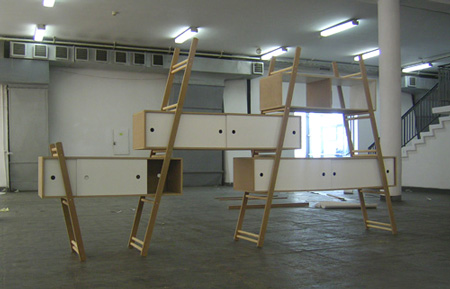
Its final shape depends on young designers who got the know-how of the ‘West’ and want to develop their profession in Poland.
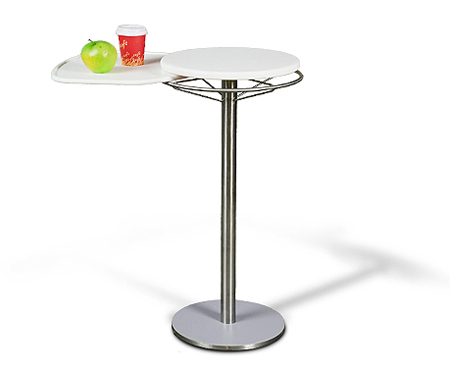
Above and below: Docking table is designed for coffe bars, canteens and conference rooms. The trays are a part of the table. Food and drink can be collected on the trays and slotted back into the table. The flat surface can also be used as an ordinary meeting table, thus saving space.
Kompott gets involved in the public and social projects as well. Recently, they have developed a solution for the city of Warsaw (Parkower) and are in the process of putting it into production.
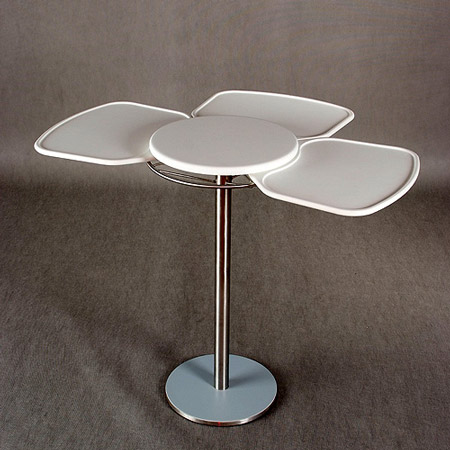
At this moment with a partnership company they are developing a Design Consultancy service.
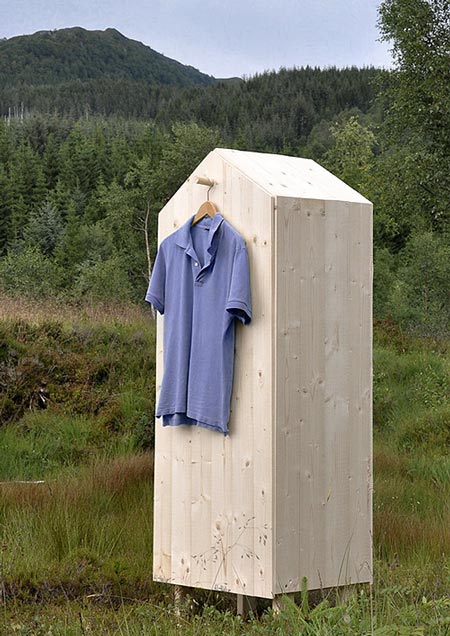
Above and below: Barn The shape of a wooden house – despite its simplicity and the use of natural material – is a strange and outstanding element in the natural landscape.

This most primal proof of human existence seemed so forced into the environment of the wild nature that we decided to move it away from it. Scaling down, changing the context and functions we have created an indoor landscape made of a series of objects.
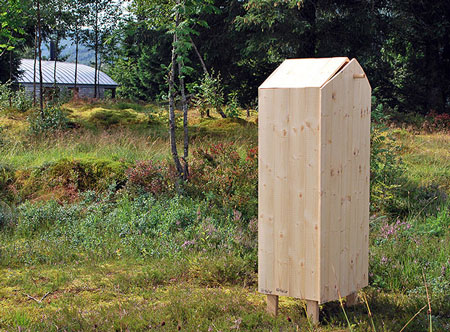
The barn - or house - like shaped furniture were given the functions of storage and more. Then, we have moved them back into the nature. There, under the conditions of nature – the sun, the rain and the wind, they change and grow into yet something else. The project is open, growing, rooting and changing, like the landscape – both wild and teamed.
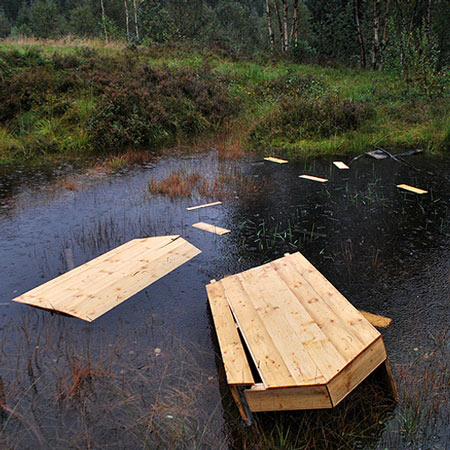
Below: s.o.o.n ( Something Out Of Nothing ) The Something Out Of Nothing Project recalls times when Fathers would make and repair their children's toys by themselves, with the materials they had readily available.
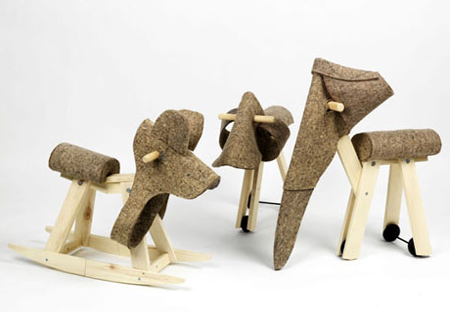
Toys created and built by a child's parents carry a far greater emotional value, they are a statement of individuality and longevity. S.O.O.N is an attempt at reviving the creativity that lies in all of us. Using inexpensive and easily obtainable materials (in this case the IKEA vika lilleby trestel), a few pieces of cloth or felt (for instance an old blanket), simple tools (a saw and a screwdriver) and instructions, we can all build a toy for our child. This is only the beginning of our independence! A crisis is a good time for a change and a return to our roots, do we have to be mindless consumers?
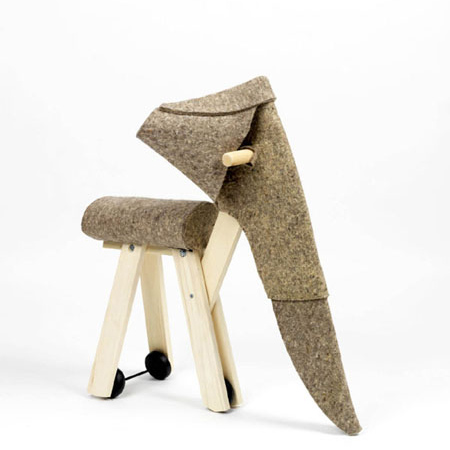
Below: Easy plug is a set of two rubber plugs: for a basin and for a bathtub. Both side of the plug are spherical, that allows plugging the basin without placing the plug exactly in the middle of the waterhole. This is an alternative solution for people with fine motor problems, impaired vision, for the elderly and children. The basin plug is easy to plug in and plug out - instead of ‘pinching’ the tiny knob you just scoop it out. The plug for the bathtub has an element floating on the surface of the water. This not only allows plugging in and out without leaning over the bathtub, but is also an extra safety feature for an overflow.
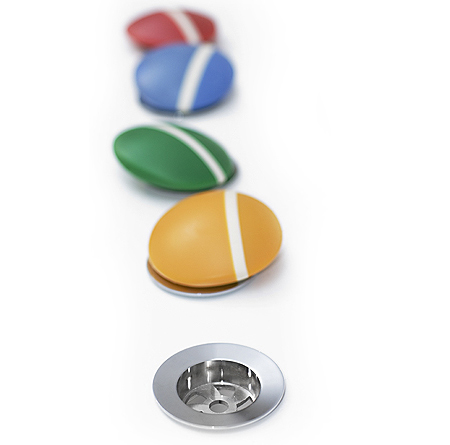
Below: Trim chairs for offices and public areas such as waiting-rooms or projecting halls. The TRIM chair and armchairs are characterized by a simple yet sophisticated form.
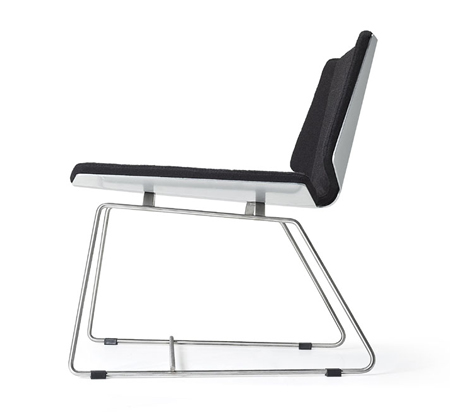
They are ligtweight and can be easily combined in sets depending on the functionality and arrangenment of the interior.
